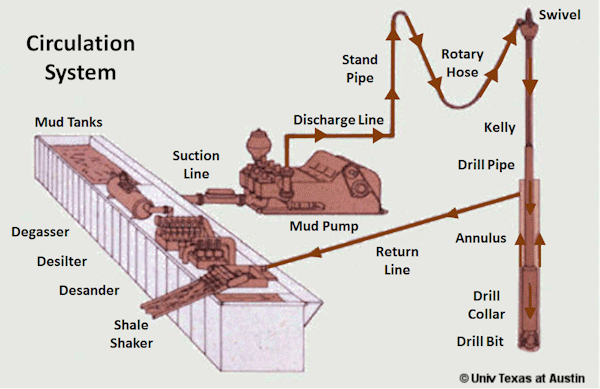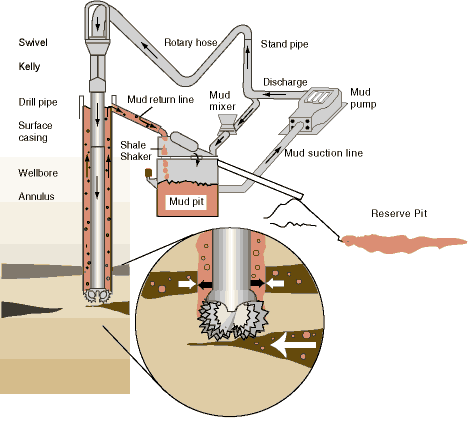Monitoring and Maintaining Mud System
The mud circulatory system consists of the several elements. Let's take a closer look.
Schematic of the circulating system: The drill bit, drill collar, annulus, drill pipe, kelly and swivel are depicted in the upper right. Drilling mud flows through the mud return line upon its return to the surface from the hole to the shale shaker, then to the adjacent desander, desilter and degasser back to the mud tank. Mud passes through the suction line, and the mud pump circulates the mud through the discharge line, the stand pipe through the rotary hose and the swivel, back to the kelly and into the drill pipe.
Each part of this system must function and be in good repair to maintain well control.
If the mud level increases, it may be a sign that a kick is in progress. A kick is an entry of water, gas, oil, or other formation fluid into the wellbore during drilling. It occurs because the pressure exerted by the column of drilling fluid is not great enough to overcome the pressure exerted by the fluids in the formation drilled. If prompt action is not taken to control the kick or kill the well, a blowout may occur.
On some rigs there is a mud float level gage which sounds an automatic alarm if the mud exceeds a pre-specified level.
Potential Hazards
- loss of well control (blowout)
Possible Solutions
- Keep the mud circulating system in good working order.
- Check and maintain the properties of the drilling fluid, including proper pit level periodically.
- Properly train crew in monitoring and well control procedures.
- Maintain a properly functioning surface control system.
Knowledge Check Choose the best answer for the question.
9-3. What may result if the drill bit hits a vein of unexpected higher pressure?
You forgot to answer the question!


